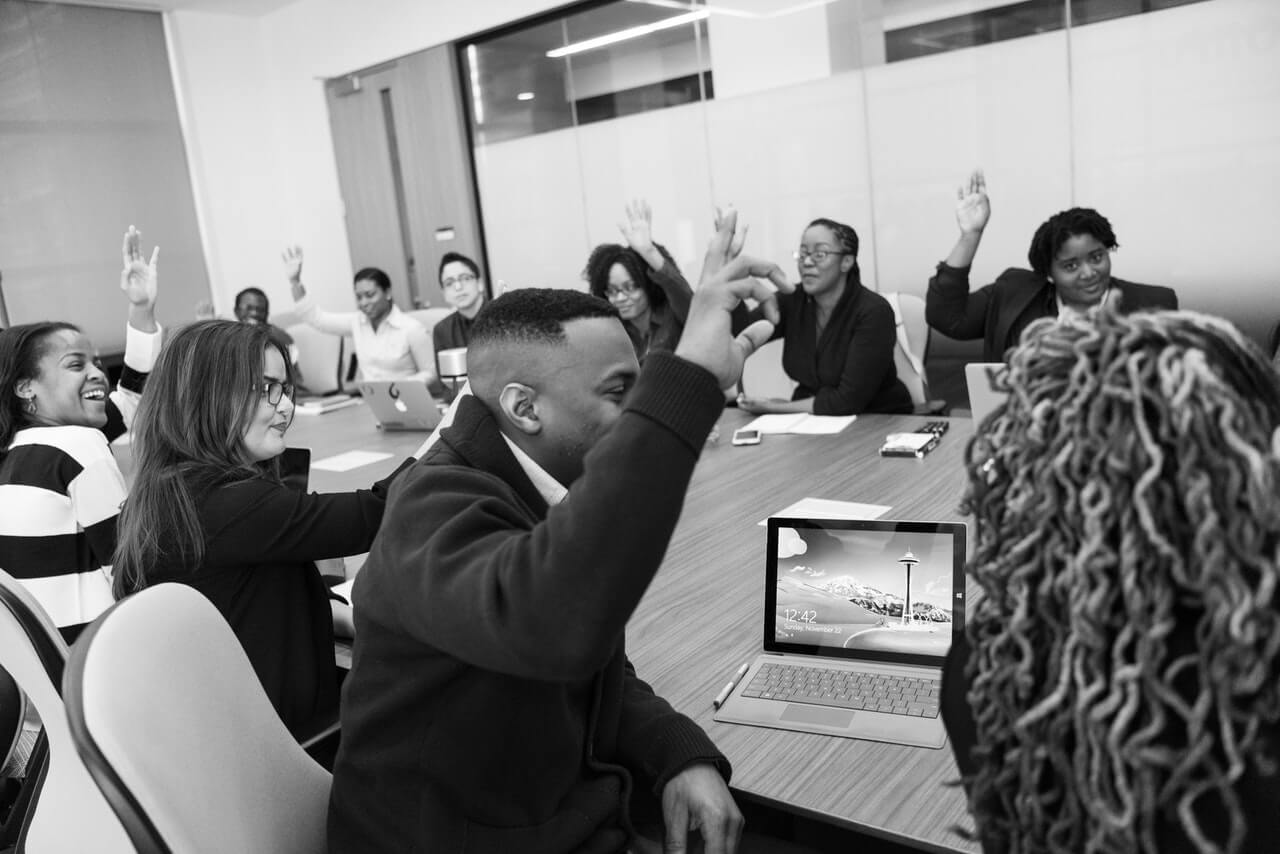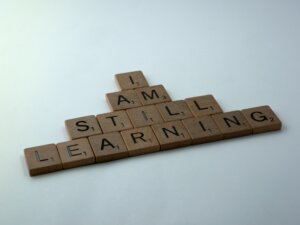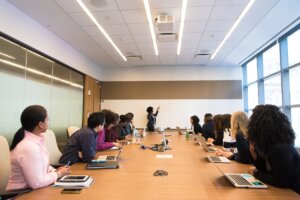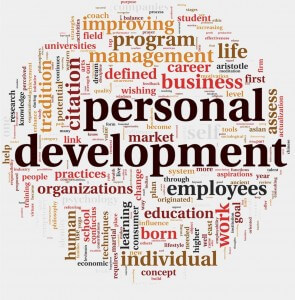Ideas for Improving Any Training and Development Plans
© Copyright Carter McNamara, MBA, PhD, Authenticity Consulting, LLC.
Adapted from the Field Guide to Leadership and Supervision in Business
and Field Guide to Leadership and Supervision for Nonprofit Staff.
Sections of This Topic Include
- Introduction
- Planning — Some Considerations for Developing the Training and Development Plan
- Goals — Selecting the Training and Development Goals
- Methods — Remembering Some Basic Principles About Adult Learning When Selecting Methods
- Methods — Some Basic Mistakes to Avoid When Selecting Methods
- General Suggestions for Building More Learning into the Plan
- General Suggestions for Building More Learning into Our Lives
- Summary of Above Suggestions to Enrich Training and Development
Also consider
Related Library Topics
Learn More in the Library’s Blogs Related to Enriching Training and Development
In addition to the articles on this current page, also see the following blogs that have posts related to Enriching Training and Development. Scan down the blog’s page to see various posts. Also, see the section “Recent Blog Posts” in the sidebar of the blog or click on “Next” near the bottom of a post in the blog. The blog also links to numerous free related resources.
- Library’s Career Management Blog
- Library’s Human Resources Blog
- Library’s Leadership Blog
- Library’s Supervision Blog
- Library’s Training and Development Blog
Introduction
NOTE: The following considerations are meant to round out the vast advice offered in the section Overview of Training and Development. These considerations do not replace information in that section. This framework should not be used without having first read that section.
As previously noted, training and development can be initiated to address a “performance gap” (learning needed to meet performance standards for a current task or job), “growth gap” (learning needed to achieve career goals), or “opportunity gap” (learning needed to qualify for an identified new job or role). The following considerations apply to any of these situations.
The information frequently references supervisors and employees/learners. However, information also applies to learners wanting to develop their own training and development plan.
The terms “employee” and “learner” are used interchangeably in the following.
Planning – Some Considerations When Developing the Plan
Be Sure to Document a Training and Development Plan (Goals, Methods, and Evaluation)
Carefully consider using some form of a training and development plan, even if thinking about informal means of training and development. Sketching out a plan with goals, intended methods, and evaluation, will at least give you a sense of what you want and how you’ll recognize if you’ve got it or not. Don’t expect perfection in the plan or the learner. Start simple, but start. Then update the plan as you go along.
Don’t Worry About Whether Your Plan is Perfect or Not — The Plan is Guide, Not Law
The key is to get started. Start simple, but start. Do the best that you can for now. There is no perfect plan. You’re doing the plan according to your nature and needs.
Also, it’s not important to stick to the plan for the sake of the plan. Deviations from the plan are to be expected. It’s important that deviations are recognized and explained.
Remember that Development is a Process
Often, the ongoing reflection and discussions between supervisor and learner are far more important than the results produced by learners during the training and development process. Appreciate this interaction as much as reaching any objectives in the plan.
Goals – Selecting Training and Development Goals
Select 2-4 Goals to Get Started
Each of these goals will be associated with, e.g., 2-4, learning objectives that when reached by the learner will result in the learner reaching the overall training goal. (More about learning objectives later in a basic framework for developing a training and development plan.)
Determine the Goals Yourself — Don’t Adopt Them from Another Program, Writer, etc.
It’s very tempting to get a copy of a formal training program’s goals and make them your own. It’s very tempting to read a writer’s suggestions about what a leader should be and adopt those suggestions as requirements in your program. Almost everyone wants to have more character, be charismatic, be more visionary, work well with groups, be more communicative, support followers, etc.
But you may very well have already met those goals! Because the writer’s suggestions sound very virtuous, e.g., to have more character, does not mean that you don’t already have a great deal of character that already incorporates the values needed for strong and effective leadership in your organization.
Therefore, give careful thought to your training and development goals. Ultimately, you and your supervisor are the best judges of what you should aim to learn.
Set Realistic Expectations
As explained in previous information about Training Analysis, learning goals should be established based on needed areas of knowledge and skills. These needs are established by referencing relevant strategic goals, competencies lists, job descriptions, job analysis, tasks analysis, etc. Be sure these goals are realistic.
There is a vast amount of management literature today, much of it asserting the need for continued change among organizations and employees. Often, we’re expected to achieve total quality and total integrity. We’re encouraged to transform ourselves and our organizations. These expectations can serve as powerful visions to provide direction and purpose.
However, as these expectations become strong requirements in the workplace, they must be carefully considered and planned. Otherwise, they can spawn a great deal of despair and cynicism. Consequently, be realistic about training and development plans. Particularly regarding development efforts such as leadership development, it can be very seductive to have goals such as “total integrity”. If you want “total
integrity” as a goal, know what behaviors will depict total integrity, and then identify those behaviors in your training and development plan.
Don’t Forget the Most Important Sources of Suggestions Supervisors and Subordinates
When selecting training and development goals, ask your supervisor for feedback. For example, if you’re planning a leadership development program for yourself, ask your supervisor for suggestions about how you could improve. He or she may be the best person to give you ideas for goals and methods. He or she has had to develop leadership skills and also has watched you over the years. Also, don’t forget to ask your subordinates for suggestions. They often have impressions about you that you’ll never find out about unless you ask for them.
Integrate Results Expected from the Learner with Goals in the Performance Plan
Include the training and development goals in the performance review planning and discussions. This affords ongoing tracking and discussion to ensure that training and development results are actually carried over into the results in the workplace. If the supervisor and employee have been conducting the employee performance management process and perceived a “performance gap”, then the performance review process already includes the goals needed by the training and development plan.
“Growth gap” and “opportunity gap” training goals should also be included in the performance review process as career development goals to ensure ongoing tracking and discussion. However, be very careful about evaluating the employee on whether they achieved career goals or not. Many variables can occur which hamper the employee from achieving career goals. Instead, focus performance evaluations on the achievement of performance standards.
Methods – Remember Basic Principles About Adult Learning
Adults Learn Best by Applying Information to Current, Real-World Needs
Therefore, select training and development methods that include the learner’s actually applying new information and methods in the workplace to a real-life problem. It’s often difficult for learners to translate discussion about simulated situations (e.g., case studies) back to the workplace. On-the-job training can be very powerful when complemented with new information and methods, and time for reflection.
Adults Learn Best by Exchanging Feedback About Experiences
Learners benefit a great deal from ongoing feedback around their experiences when applying new information and materials. Ideally, training and development experiences afford learners the opportunity to describe the results of applying new information and methods, what they thought would happen, what actually happened and why, and what the learner gained from the experience.
Methods – Some Basic Mistakes to Avoid
Particularly after 12 to 16 years of classroom education, we tend to fall prey to several common myths about training and development. The following advice is geared to help learners avoid those myths.
- Don’t mistake data and information for knowledge and wisdom.
Too often, when we want to learn something, we take a course, carefully analyze the material and consider ourselves as having learned the information. Yet how much of the material from our courses have we really practiced? Paulo Freire, who is probably responsible for educating more human beings than anyone in history, asserts that “without practice, there is no knowledge”. - Don’t mistake entertainment for enlightenment.
Go to your library, look at the hundreds, maybe thousands of books there. How many did you really need? How much of the authors’ advice did you actually follow? How many books met the strong promise you felt when you first read the title? - Don’t mistake analysis for learning.
Assignments over the years ask us to “analyze the content and then write a paper”. Yet, Eastern philosophies that have existed thousands of years before ours, remind us of the role of intuition, and of the role of reflection on our experiences (on our practices). Use more than your brain, use your intuition and your heart. - Don’t mistake education to occur only in classrooms.
Yet research indicates that adults learn best when they apply information to meet current, real needs in their lives, that is when they ground their theories in practice. And they learn best when exchanging ongoing feedback around these practices.
General Suggestions to Build More Learning into the Plan
- For every learning method, answer “How will this learning affect the real world?”.
Have your supervisor or best friend hold you accountable to answer that question. It may be the most important question in your plan and its answer may leave you feeling the most fulfilled when the plan has been implemented. - Include learning activities that go well beyond the safety of reading and writing papers.
Take some risks. Have your spouse or close friends suggest what you most need to learn and how. Ultimately, ensure that you’re not engaged in extended arguments about “How many angels will fit on the head of a pin — come to the New Millennium?”. - Take advantage of real-life learning opportunities in the workplace.
Your life and job afford you numerous opportunities from which to learn. For example, if you’re designing a plan to develop leadership skills, then select learning methods that involve leading efforts in your community. Volunteer at a local nonprofit or professional organization. - Practice principles of unconventional educators, such as Paulo Freire and Myles Horton<.
Freire and Horton taught people to read, not just for the sake of learning, but to meet real and current needs in the lives of their learners. Horton, who didn’t write any scholarly papers in his life, started the Highlander Folk School. The school had no classrooms, and no expert lecturers. Yet, Martin Luther King said that Highlander probably had more to do with addressing desegregation than he did. In another case, after leaving Highlander, a young black learner refused to go to the back of the bus — Rosa Parks.
Also, consider
Better Together: Moving From Push to Pull Learning
General Considerations to Build More Learning into Our Lives
Many of us give far more attention to the learning we glean from our classrooms than we do from the rest of our lives. Many of us come to realize this situation only after we’ve graduated. Again, some suggestions:
- Write Down Ten Most Important Things You’ve Learned — How Did You Learn Them?
It’s ironic that, considering the thousands of exercises we’ve been assigned in our lives, this exercise is never among them! Yet it’s probably one of the most important. Next to each thing you learned, note what you did to learn it. Do you know? Did it occur in a classroom? What theory spawned that learning? - Once a Week, Write Down a Key Learning Experience — What Did You Learn?
You will learn far more from your real-world experiences (or practices), including from your intimate relationships with others, than you will from all of the classrooms and all of the books in the world! (See One Simple Private Learning Journal.) - Involve Yourself in Community Service — Great “Classroom” in Life!
These services are powerful “practices” that soon spawn rich, deep learning in our lives! - For One Minute, Stare At Yourself in the Mirror: Ask “How Do I Feel About Myself?”.
Update your training and development plan to address any concerns you have about the person staring back at you in the mirror. As with any successful therapy or managing or teaching, you must first start with yourself.
Summary of Above Suggestions to Enrich Training and Development
Some Basic Requirements of Learners
- Learners Must Be Willing to Grow, to Experience
- Growth Involves the Entire Learner
- Growth Requires Seeking Ongoing Feedback
Some Basic Requirements of Supervisors
- Include Learners in Development of Training and Development Plan
- If Available, Have Human Resources Representative Play Major Role
- Provide Ongoing Feedback and Support
- When Assessing Results of Learning, Maximize Feedback About Performance
- Budget Necessary Funds for Resources Learner Will Need
- Set Aside Regular Times for Supervisor and Learner to Meeting
Developing the Training and Development Plan
- Document a Training and Development Plan (Goals, Methods and Evaluation)
- Don’t Worry About Whether Your Plan is Perfect or Not — The Plan is Guide, Not Law
- Remember that Development is a Process
Selecting Training and Development Goals
- Select 2-4 Goals to Get Started
- Determine the Goals Yourself — Don’t Adopt Them from Another Program
- Set Realistic Expectations
- Don’t Forget the Most Important Sources of Suggestions: Supervisors and Subordinates
- Integrate Results Expected from the Learner with Goals in the Performance Plan
Basic Principles About Adult Learning When Selecting Methods
- Adults Learn Best by Applying Information to Current, Real-World Needs
- Adults Learn Best by Exchanging Feedback About Experiences
Basic Mistakes to Avoid When Selecting Methods
- Don’t Mistake Data and Information for Knowledge and Wisdom
- Don’t Mistake Entertainment to Be Enlightenment
- Don’t Mistake Analysis to be Learning
- Don’t Mistake Education to Occur Only in Classrooms
Basic Considerations to Build More Learning into the Training and Development Plan
- For Every Method in Your Plan, Ask “How Will This Learning Effect the Real World?”
- Go Well Beyond the Safety of Reading and Writing Papers
- Take Advantage of Real-Life Learning Opportunities in the Workplace
- Consider Principles of Unconventional Educators, Such as Paulo Freire and Myles Horton
Basic Considerations to Build More Learning into Our Lives
- Write Down Ten Most Important Things You’ve Learned — How Did You Learn Them?
- Once a Week, Write Down the Key Experiences Over Past Week and What You Learned
- Involve Yourself in Community Service — Great “Classroom” in Life!
- Finally, Take Five Minutes to Stare in the Mirror. Ask “How Do I Feel About Myself?”
Go to main Training and Development page.
For the Category of Training and Development:
To round out your knowledge of this Library topic, you may want to review some related topics, available from the link below. Each of the related topics includes free, online resources.
Also, scan the Recommended Books listed below. They have been selected for their relevance and highly practical nature.
 Sections of this topic
Sections of this topic
















